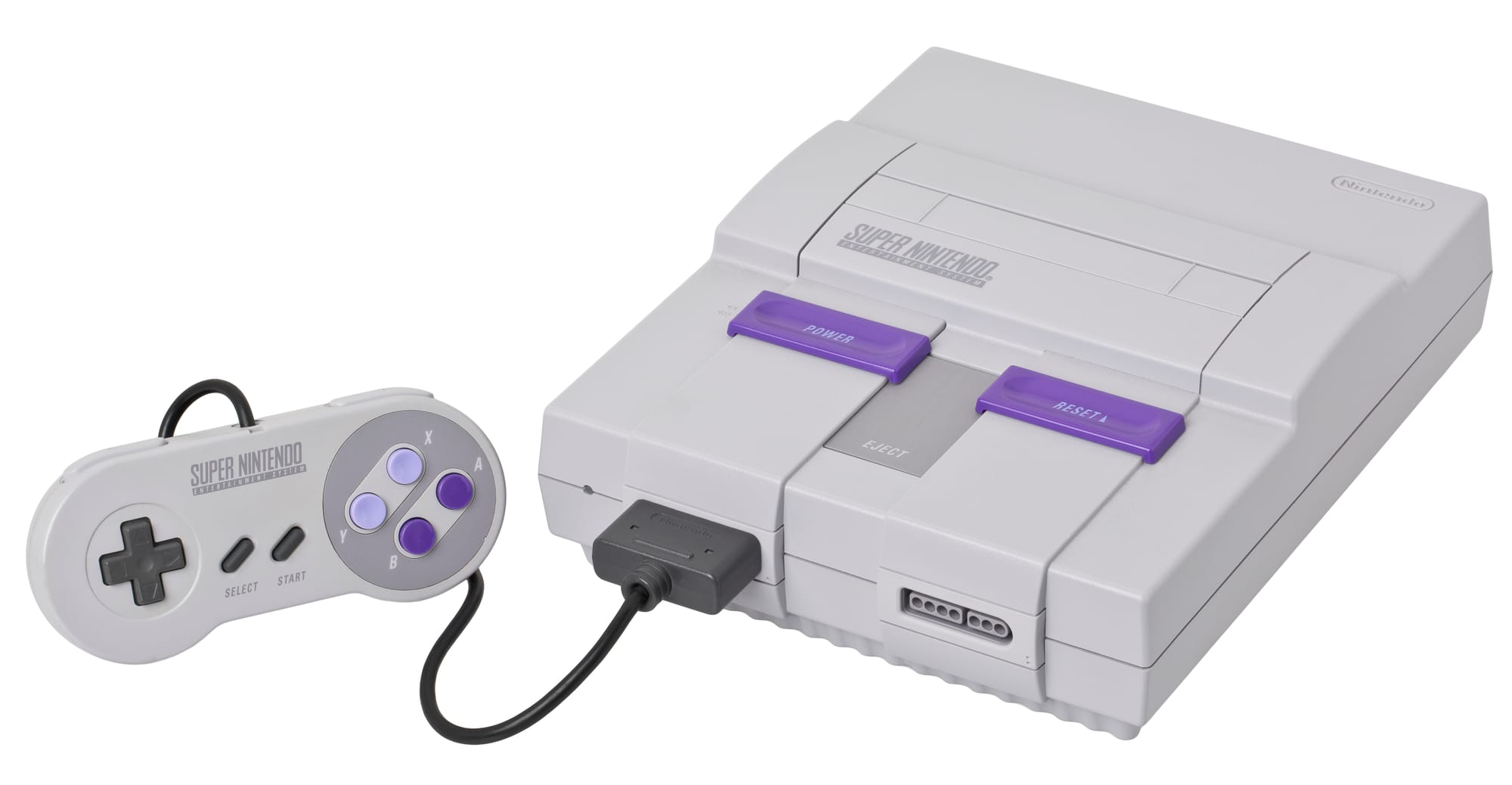Super Nintendo Entertainment System (SNES): A legacy of innovation and storytelling
Released in 1990 in Japan as the Super Famicom and in 1991 in North America as the Super Nintendo Entertainment System (SNES), this 16-bit console marked a new era of gaming. Building on the success of the Nintendo Entertainment System (NES), the SNES brought enhanced graphics, immersive sound, and a library of groundbreaking games that elevated the medium to new heights. With its advanced hardware and focus on storytelling and gameplay innovation, the SNES quickly became a cultural icon, defining the early 1990s for gamers worldwide.

The SNES introduced Mode 7 graphics, which allowed for impressive scaling and rotation effects, and a sophisticated sound chip designed by Sony, delivering rich, layered music and sound effects. These features enabled developers to create expansive worlds, cinematic storytelling, and complex gameplay mechanics, setting the SNES apart from its competitors.
A diverse library of gaming masterpieces
The SNES’s game library showcased the potential of 16-bit gaming, with titles that spanned every genre and often redefined them. Games like Super Mario World, Donkey Kong Country, and Final Fantasy VI became instant classics, pushing the boundaries of platforming, graphics, and narrative depth. The SNES also introduced iconic franchises, including Star Fox with its 3D polygons and Super Metroid with its atmospheric exploration.
Nintendo’s partnerships with third-party developers like Square, Capcom, and Konami brought a wealth of unforgettable titles to the system. These partnerships helped cement the SNES’s reputation as a console for gamers who craved innovation and depth in their experiences.
The Legend of Zelda: A link to the past
Among the SNES’s most iconic games is The Legend of Zelda: A Link to the Past, released in 1991. As the third entry in the Zelda series, this action-adventure game expanded on the formula established by its predecessors while introducing new mechanics and a richly detailed world.

Set in the dual realms of Hyrule and the Dark World, A Link to the Past follows Link on a quest to rescue Princess Zelda and defeat the evil wizard Agahnim. The game introduced series staples such as the Master Sword, a dual-world mechanic, and intricate dungeon puzzles. Its top-down perspective allowed for more detailed environments and fluid gameplay, while the SNES’s hardware enabled a vibrant color palette and a memorable soundtrack that enhanced the game’s immersive quality.
A Link to the Past set a new standard for action-adventure games, blending exploration, combat, and storytelling into a seamless experience. Its influence can be seen in countless games that followed, and it remains a touchstone for the genre. For many players, it was the definitive reason to own an SNES.
The console wars: SNES vs. Sega Genesis
The SNES entered the market during the height of the Console Wars, a rivalry with the Sega Genesis that defined a generation of gaming. While Sega positioned the Genesis as the cooler, edgier console, Nintendo emphasized the SNES’s technical superiority and its lineup of high-quality games. This competition pushed both companies to innovate, resulting in a golden age of video games.
The rivalry extended to marketing campaigns, with Nintendo promoting the SNES’s Mode 7 graphics and superior sound capabilities. Fans fiercely debated which console was better, but both systems thrived, offering distinct experiences that expanded the gaming audience.
The SNES’s cultural impact and legacy
The SNES wasn’t just a gaming system—it was a cultural phenomenon. Its games inspired merchandise, television shows, and even symphony performances. Franchises launched or refined on the SNES, such as The Legend of Zelda, Super Mario, and Final Fantasy, remain beloved to this day, continuing to influence the industry.
The console’s emphasis on storytelling, innovative mechanics, and artistic design elevated video games as a medium. It proved that gaming could be more than just entertainment—it could be an art form capable of delivering emotional and memorable experiences.
The lasting legacy of the SNES
Today, the SNES is celebrated as one of the greatest consoles in gaming history. Its games are preserved through digital re-releases, emulation, and dedicated retro communities. For many, the SNES represents a golden age of gaming, a time when creativity and ambition knew no bounds.
The SNES’s combination of technical innovation, unforgettable games, and cultural impact ensures its place in the annals of gaming history. It wasn’t just a console—it was a defining moment for the industry, a testament to the power of storytelling, and a source of countless cherished memories.


